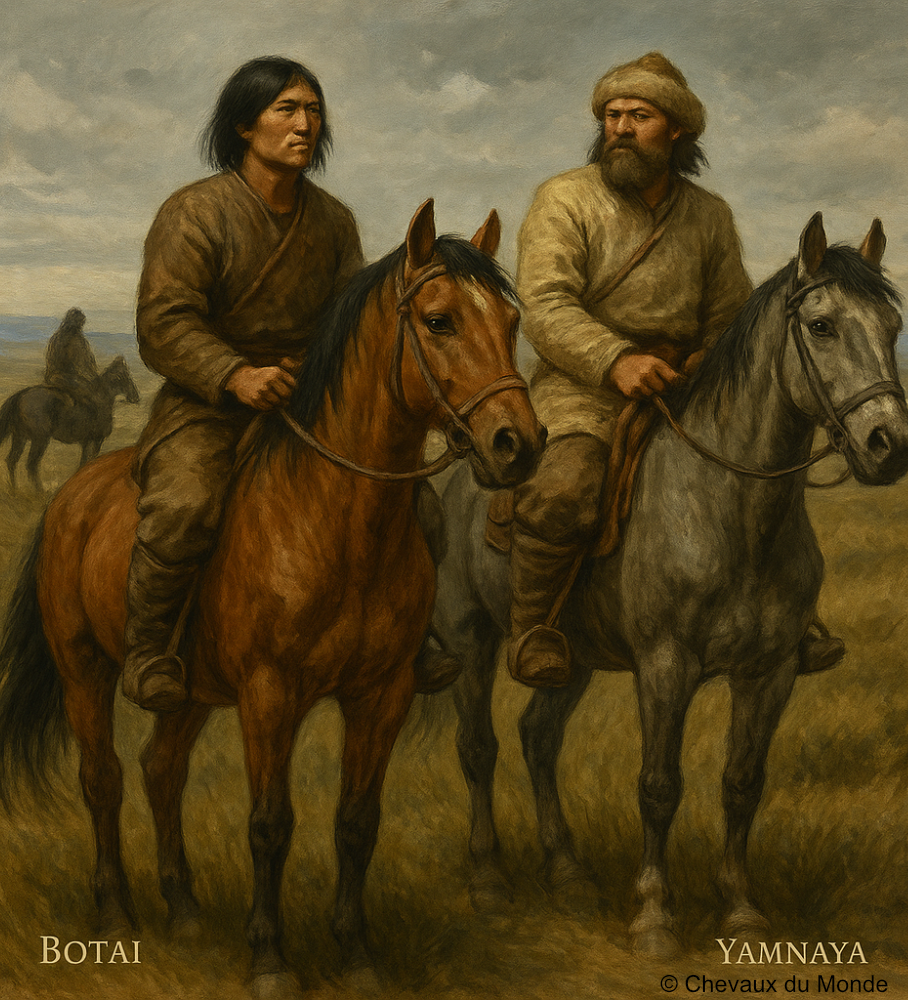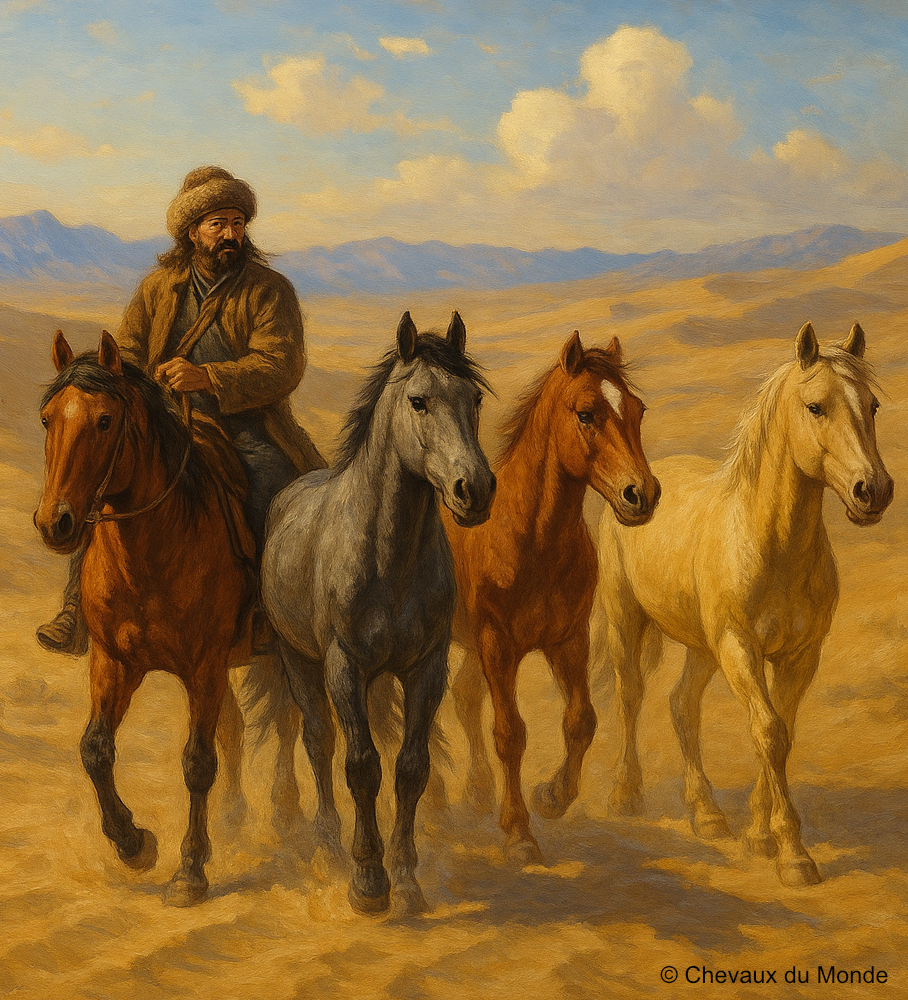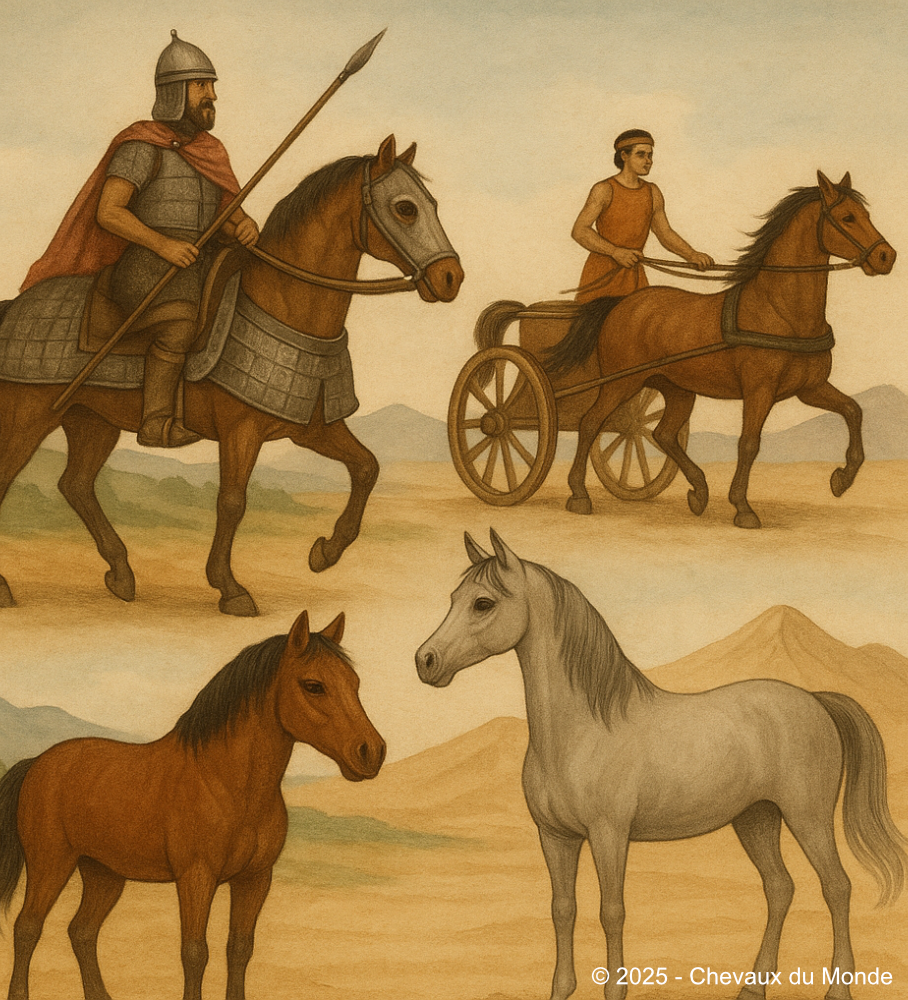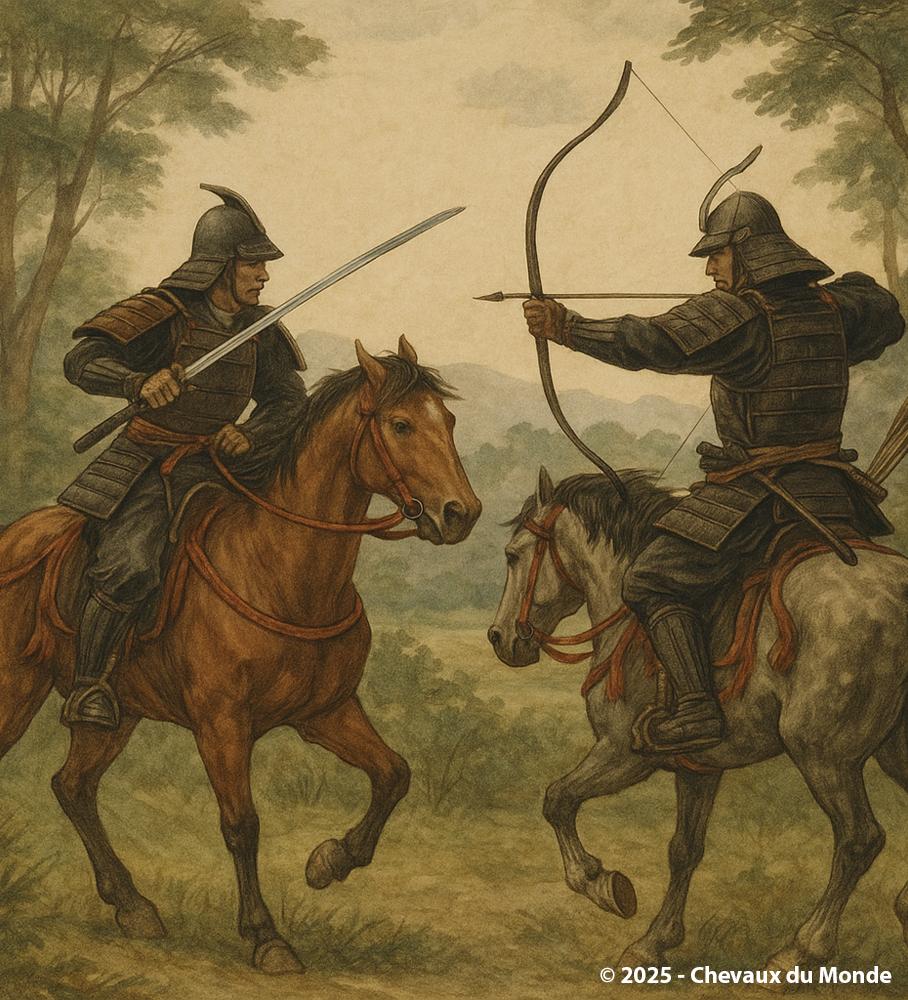HORSES AND ANCIENT CIVILIZATIONS: PARTNERS IN WAR, LABOR, AND PRESTIGE
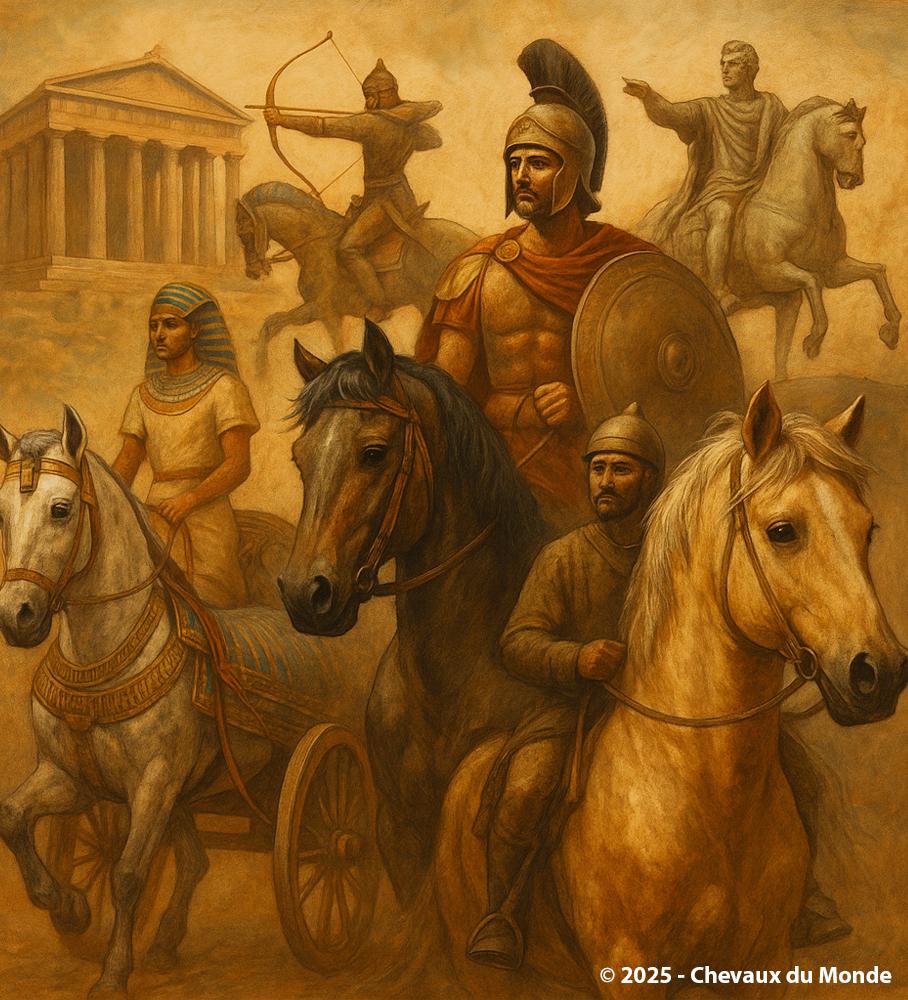
Since antiquity, horses have played a key role in ancient civilizations, as military allies, working animals, and symbols of prestige. From Egyptian chariots to Greek and Roman cavalry, horses have shaped human history.
Since the dawn of human history, horses have accompanied the greatest transformations of civilization. As war mounts, agricultural tools, symbols of power or sacred figures, horses have played a central role in the development of ancient societies. This article invites you to travel through time to explore how the world’s most iconic civilizations integrated these hoofed allies into their daily lives.
Ancient Egypt: The Chariot of Nobility
The horse appeared in Egypt around 1700 BCE, likely introduced by the Hyksos. Unlike the already domesticated donkey, horses were mainly used for pulling, especially war chariots.
These two-wheeled vehicles quickly became symbols of military and aristocratic prestige. Royal tomb paintings, such as those of Ramses II, depict finely adorned horses, carefully harnessed. Horses were associated with the elite and nobility and rarely ridden directly.
The chariot even became a symbol of divine power: Pharaohs were often shown leading troops to victory, guided by the gods.
Ancient Greece: Status, Sport, and Symbolism
In Greece, the horse was more than a tool of war—it was a marker of social class. Only wealthy citizens could afford to own a horse, making it a symbol of aristocracy.
Horses featured in the Panhellenic Games: chariot and mounted races were crowd favorites. These events were typically reserved for noblemen, whose names were honored even if they didn’t drive the chariots themselves.
In Greek mythology, horses played a prominent role: Pegasus, the winged horse, was born from Medusa’s blood; Apollo’s horses pulled the chariot of the sun; and Poseidon, god of the sea, often appeared with wild horses leaping from the waves.
Mesopotamia and the Hittites: War and Pageantry
The earliest depictions of horse-drawn chariots come from the Mesopotamian city-states. The Sumerians used harnessed vehicles, often pulled by onagers or hybrid donkeys.
The Hittites refined the light war chariot, capable of carrying two to three warriors. They developed sophisticated breeding and harnessing techniques to increase the strength and endurance of their horses.
Hittite reliefs highlight the strategic use of light cavalry and the horse’s central role in great battles, including those fought against Egypt and Assyria.
The Persian Empire: Birth of Elite Cavalry
Under the Achaemenid Empire, Persia developed one of antiquity’s most formidable professional cavalries. Horses were bred for speed and stamina, and Persian riders were trained in horseback archery, a highly effective and visually stunning tactic.
Horses became key instruments of imperial expansion—carrying messengers, soldiers, and rulers across vast territories. Native breeds like the Nisaean horse (likely ancestor of the Akhal-Teke) were famed for their elegance and endurance.
Ancient Rome: Utility Meets Spectacle
The Romans weren’t the greatest horsemen of their time, but they recognized the strategic importance of horses. In their legions, horses served in scouting, messaging, and auxiliary units.
Chariot racing, however, was a mass spectacle. At the Circus Maximus, aurigae (drivers) competed under factional colors (Blues, Reds, Greens, Whites). Horses were adored by the crowds—sometimes more than the drivers themselves.
In Roman art and ceremonies, the horse symbolized triumph and imperial authority.
Ancient China: Celestial and Imperial Horses
In China, horses were first seen as exotic animals, introduced through the Silk Road.
During the Han dynasty (206 BCE – 220 CE), the Ferghana heavenly horses became strategically important. Admired for their speed and strength, they fascinated emperors and were closely guarded.
The horse evolved into a symbol of imperial power. Tang dynasty tombs, for instance, feature terracotta statues of elaborately harnessed horses.
Besides warfare, horses were used in ceremonial processions, races, and even as ritual sacrifices in funerary rites.
Ancient India: Cavalry and War Elephants
In India, horses coexisted with elephants—often preferred for direct charges—but fast-moving horses remained crucial for skirmishes, messengers, and tactical maneuvers.
Vedic texts mention the Ashvamedha, a ritual horse sacrifice symbolizing royal power. Some dynasties developed disciplined cavalry units, inspired later by Persian and Mongol models.
Pre-Columbian Americas: The Disappearance and Return of the Horse
Before the arrival of Europeans, horses had vanished from the Americas for thousands of years. Their reintroduction in the 16th century by the Spanish shocked ecosystems and cultures alike.
In just a few decades, horses transformed the lives of many Native tribes—especially in the Great Plains—ushering in new ways of living, fighting, hunting, and trading. They became essential to culture, warfare, and spiritual practices.
Legacy: What Ancient Civilizations Gave Us
– Harnessing and driving practices still used today
– Symbolic roles: warhorse, ceremonial horse, sacrificial animal
– Artistic and cultural heritage: tack design, sculptures, murals...
– Modern breeds with ancient roots: Akhal-Teke (Turkmenistan), Marwari (India), Barb (North Africa), etc.
– A universal mythology where horses embody speed, power, loyalty, or light.
The horse is far more than a domestic animal—it is a living heritage of human civilization. It has carried warriors, inspired myths, and contributed to technological and cultural progress.
Across the centuries, the horse remains a mirror of our cultures, our aspirations… and our dreams.

